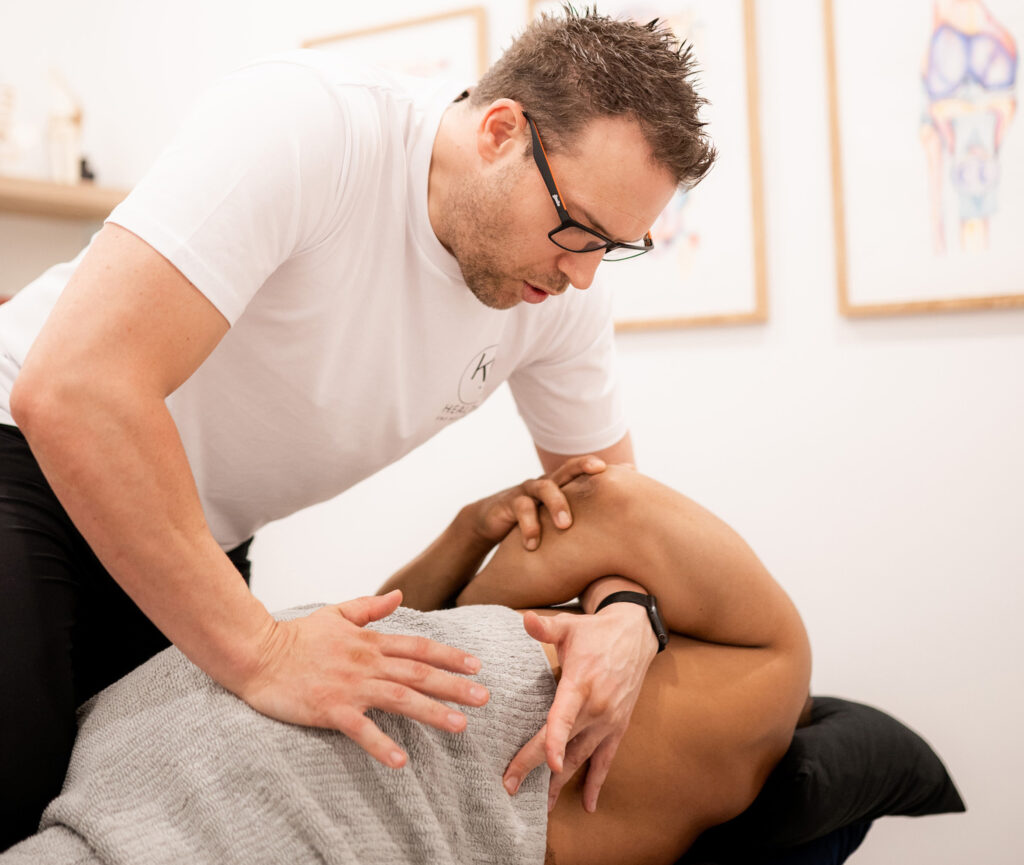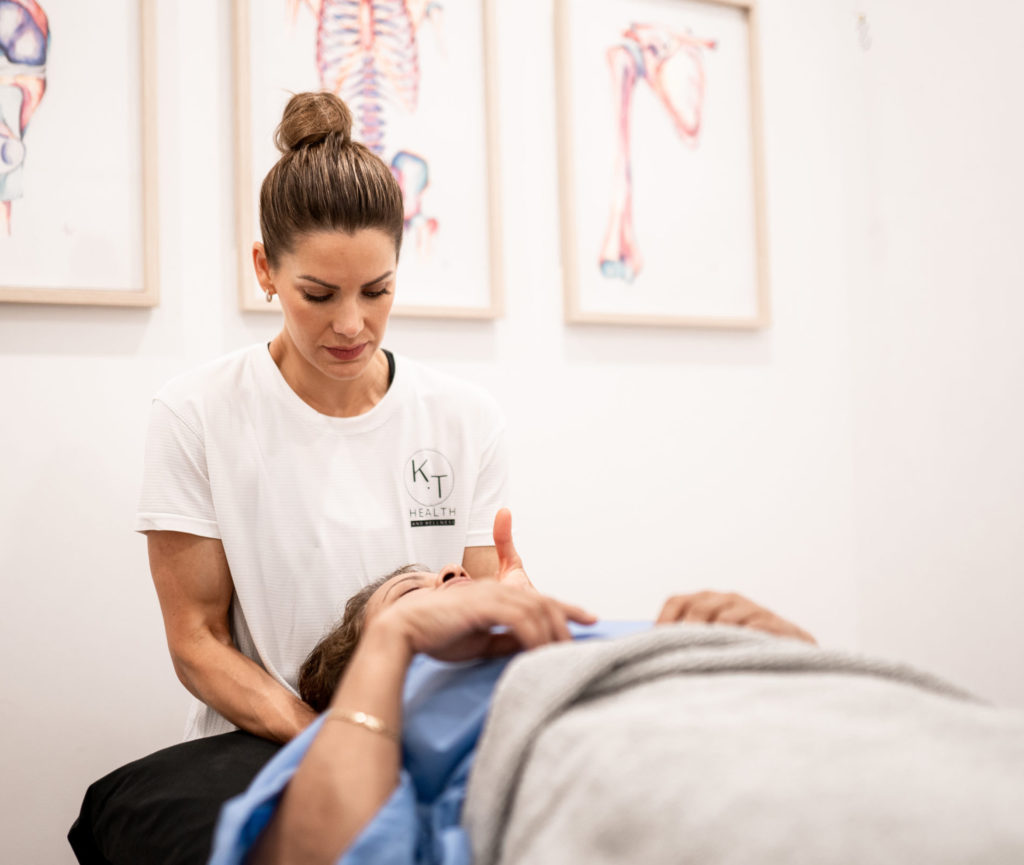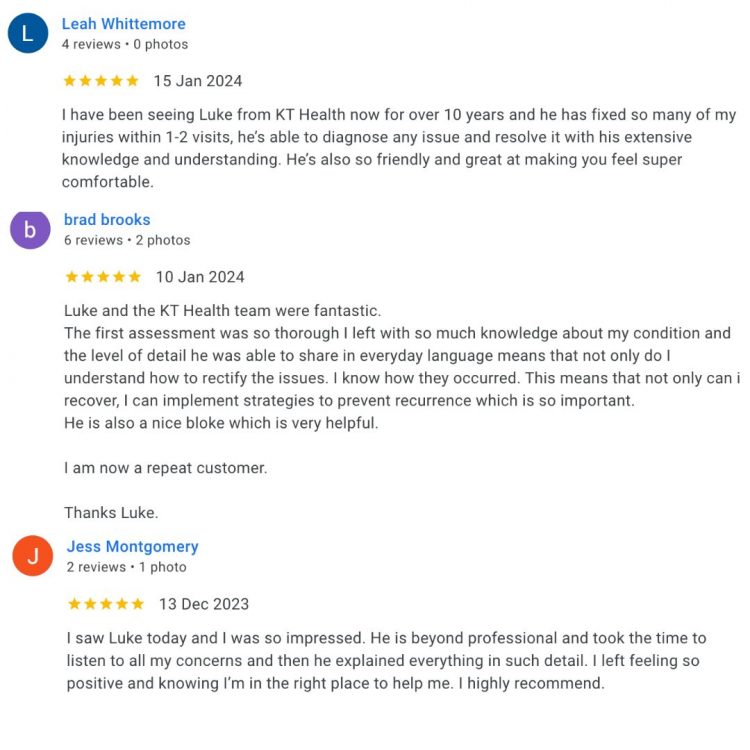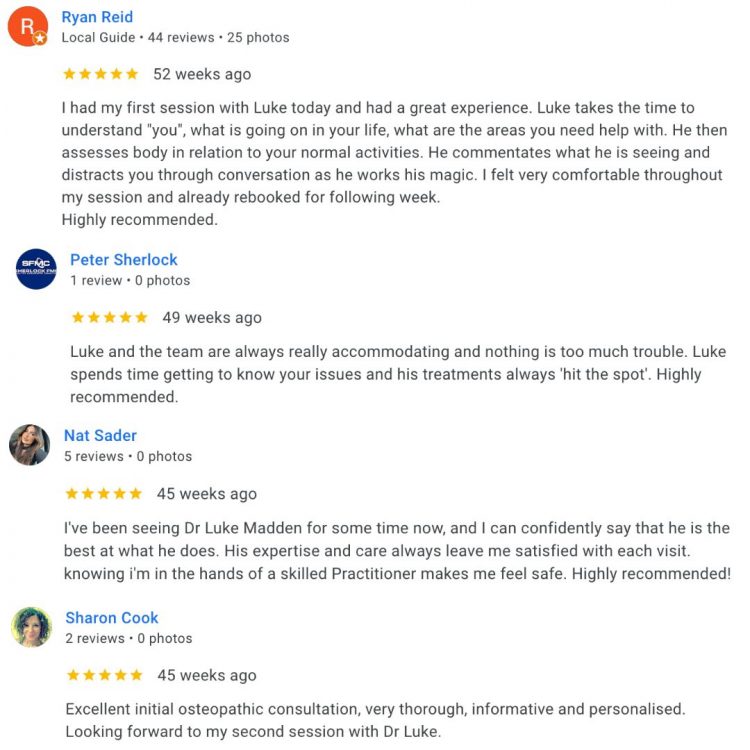Everything You Need to Know About Myofascial Pain
What is Myofascial Pain?
Myofascial pain is a condition where tight, sensitive knots in muscles, called trigger points, cause local pain or pain that refers to other areas. These knots can form from overuse, injury, poor posture, or stress, and often lead to aching, stiffness, and restricted movement in the affected area.
An analogy…
Think of a trigger point like a knot in a rope, the rest of the rope (muscle) can’t move properly until the knot is released. That tight knot pulls on surrounding areas and causes pain, even in places you wouldn’t expect.
What causes myofascial pain?
Muscles are covered in fascia, a thin layer of connective tissue. When muscles are overloaded, injured, or under constant tension, they can develop trigger points, small, tender areas within the muscle that become tight and don’t relax. These trigger points can reduce blood flow, irritate surrounding nerves, and cause pain locally or in distant areas through referred pain patterns.
What are the signs and symptoms of myofascial pain?
- Deep, aching pain in muscles, often described as dull or nagging
- Tender trigger points
- Referred pain that travels away from the source of the trigger point
- Muscle tightness or stiffness, especially after rest or activity
- Reduced flexibility or strength in the affected area
- Pain that worsens with stress, poor posture, or repetitive movement
What tests are used to diagnose myofascial pain?
Palpation: The practitioner feels for tight, tender bands of muscle or knots
Trigger point testing: Pressing on a trigger point may reproduce pain or referral patterns
How long does myofascial pain take to heal?
Mild, recent cases may resolve in 1 to 2 weeks with treatment. More persistent cases may take 4 to 6 weeks or longer. Chronic myofascial pain, especially if associated with stress or poor posture, may require long-term management and prevention strategies.
How does myofascial pain happen?
- Poor posture or sustained positions
- Repetitive movements or muscle overuse
- Acute injuries or trauma
- Stress and tension, leading to muscle clenching
- Lack of movement or exercise
- Weak or imbalanced muscles causing overload in others
What treatment can help myofascial pain?
- Manual therapy, including massage, trigger point release, dry needling, or myofascial release
- Stretching and mobility work to restore normal muscle length
- Postural retraining and ergonomic corrections
- Exercise therapy to improve muscle strength and balance
- Heat therapy or contrast therapy to improve blood flow and reduce stiffness
- Foam rolling or self-massage using tools like trigger balls or spikey balls
What exercises or stretches can I do for myofascial pain?
- Gentle stretching of tight muscles
- Trigger point release using balls or rollers
- Strengthening of weak postural muscles
- Postural drills for sitting, standing, or lifting
- Breathing and relaxation exercises
What products can help with myofascial pain?
Quadriceps foam rolling
Lie on your front and place the foam roller underneath your leg.
Bend the opposite leg and bring it out to the side to help you move back and forth.
Roll the entire length of the thigh muscle, staying off the knee joint.

STOP GUESSING – START MOVING
See what other people have said about our osteopaths
Trustindex verifies that the original source of the review is Google. KT health has really helped my back and i have been able to get back into competitive sportTrustindex verifies that the original source of the review is Google. Absolutely amazing, I see Louie Nouh who always listens and caters to my needs. He is amazing at his job and always helps alleviate my pain. I highly recommend Louie.Trustindex verifies that the original source of the review is Google. Friendly, supportive staff. Such a lovely place to exercise! Highly recommend.Trustindex verifies that the original source of the review is Google. Amazing instructor, I am new to Pilates felt very comfortable & supported.Trustindex verifies that the original source of the review is Google. I have been suffering from shoulder and neck pain for months - I saw Dr Louie Nouh a couple of time. His treatment really relived the pain. I have full range of movement now. His knowledge on exercise is fantastic.Trustindex verifies that the original source of the review is Google. Absolutely love reformer at menai. Instructors are amazing. Love Michaela and love the small classes. Highly recommend!Trustindex verifies that the original source of the review is Google. The trainers are all amazing , they explain everthing step by step and help where needed . It is an amazing place to relax get to know other people have a laugh . I recommend for anyone .Trustindex verifies that the original source of the review is Google. Ever since I came here I’ve been looked after by Louie and my shoulder is already feeling much better. Highly Recommend these are good people.Trustindex verifies that the original source of the review is Google. SENSATIONAL Chiropractor in Menai! I attended my first appointment with Dr Louis Nouh at KT Health & Wellness who is an absolute genius even after one session with him. He explained everything he intended to address about my lower back condition, all in easy to understand, layman’s terms. He said he would call me the next day to follow and see how I was feeling after our session and guess what, he did! During our session, he made me feel relaxed and comfortable especially as it was my first chiropractic appointment EVER! For some reason, I am actually looking forward to my subsequent sessions with him next week. Don’t get me wrong, he did poke, prod and crack me as necessary but the results made it seem worth it.Trustindex verifies that the original source of the review is Google. I have been seeing Melinda now for a couple of months to help with bursitis in my hip. She is one of the best practitioners I’ve ever seen.. With the use of various tools and techniques she has helped me recover much quicker than I expected. Thanks Mel and see you tomorrow!
We don't offer magic fixes or cures, but a sustainable approach to back pain.
Our Osteopaths will offer you a road map to help you take control of your back pain and feel great again.
BOOK YOUR OSTEOPATH VISIT TODAY
Book a Time with Dr Luke Madden Below
Book a Time with Dr Melinda Madden Below
Already have an account?
Book as a guest
- Book an Appointment






